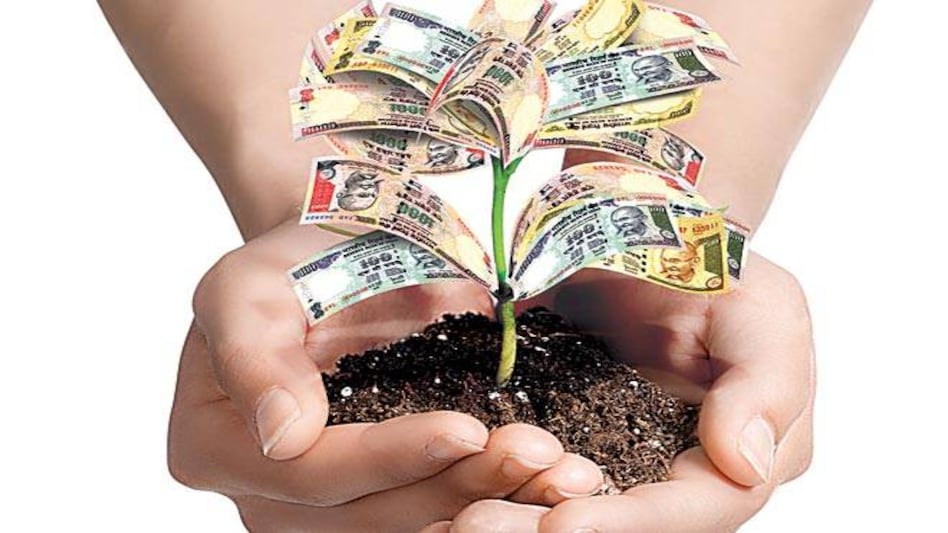Big gains
Mid-cap and small-cap funds do well in spite of a fall in benchmark indices. This may continue for some more time.

- Jun 13, 2016,
- Updated Jun 15, 2016 3:23 PM IST
Year 2015 was bad for the stock markets. The Nifty 50 fell 4.8 per cent while the Sensex shrunk 5.06 per cent. However, BSE Mid Cap and BSE Small Cap indices bucked the trend and rose 6.75 per cent and 5.46 per cent, respectively. "It is rare for small-caps and mid-caps to outperform their large-cap peers in a falling market," says Mahesh Patil, Co-Chief Investment Officer, Birla Sun Life AMC.
The reasons for the market's tepid performance were slowdown in global growth, especially China's, government inactivity on the reform front, and reporting of poor earnings by big companies. China was under stress due to falling consumption and rise in production costs because of currency devaluation. "This was a blessing for Indian small-cap and mid-cap companies as companies in sectors such as capital goods, chemicals and textiles increased their exports," says Patil.
On the other end, foreign institutional investors, or FIIs, pressed the panic button due to fear over rate increase in the US and exited emerging markets, which created more pressure on large-caps (where they are usually big investors). "Also, big companies depend on global markets for a higher share of revenue than others. That is why the global uncertainty helped small-cap and mid-cap stocks," says Patil.
This is not a one-off performance. Typically, when an economic recovery starts, as is happening at present, small-cap and mid-cap companies are the first ones to start growing fast. This is because they are nimble and can take advantage of improved economic conditions faster. Their stock also rises much faster due to fewer number of shares in the market (even a small investment can trigger a large move).
Birla's Patil says continuation of slowdown in China, depressed commodity prices and infrastructure development will contribute to growth of these stocks in the next two-three years. This, coupled with fall in interest rates and likelihood of a normal monsoon, will provide impetus to consumption. From a sectoral perspective, Surana is positive on retail banking, consumer goods like autos, durables, consumer staples and building materials. Concerted efforts by the government to revive the investment cycle will eventually lead to growth in corporate earnings, which have been muted for the past two years.
Anil Rego, CEO, Right Horizons, a wealth management firm, says a long-term investor who has high risk appetite can invest 25-30 per cent money in mid-cap and small-cap funds. Even a person with a moderate risk appetite can invest 15-20 per cent if he is investing through the systematic investment plan mode. While choosing a fund, one should consider returns across time horizons in order to see how the fund has fared during different market cycles. Also, look at risk metrics like Standard Deviation and beta. Lastly, invest only if your time frame is three-five years.
Year 2015 was bad for the stock markets. The Nifty 50 fell 4.8 per cent while the Sensex shrunk 5.06 per cent. However, BSE Mid Cap and BSE Small Cap indices bucked the trend and rose 6.75 per cent and 5.46 per cent, respectively. "It is rare for small-caps and mid-caps to outperform their large-cap peers in a falling market," says Mahesh Patil, Co-Chief Investment Officer, Birla Sun Life AMC.
The reasons for the market's tepid performance were slowdown in global growth, especially China's, government inactivity on the reform front, and reporting of poor earnings by big companies. China was under stress due to falling consumption and rise in production costs because of currency devaluation. "This was a blessing for Indian small-cap and mid-cap companies as companies in sectors such as capital goods, chemicals and textiles increased their exports," says Patil.
On the other end, foreign institutional investors, or FIIs, pressed the panic button due to fear over rate increase in the US and exited emerging markets, which created more pressure on large-caps (where they are usually big investors). "Also, big companies depend on global markets for a higher share of revenue than others. That is why the global uncertainty helped small-cap and mid-cap stocks," says Patil.
This is not a one-off performance. Typically, when an economic recovery starts, as is happening at present, small-cap and mid-cap companies are the first ones to start growing fast. This is because they are nimble and can take advantage of improved economic conditions faster. Their stock also rises much faster due to fewer number of shares in the market (even a small investment can trigger a large move).
Birla's Patil says continuation of slowdown in China, depressed commodity prices and infrastructure development will contribute to growth of these stocks in the next two-three years. This, coupled with fall in interest rates and likelihood of a normal monsoon, will provide impetus to consumption. From a sectoral perspective, Surana is positive on retail banking, consumer goods like autos, durables, consumer staples and building materials. Concerted efforts by the government to revive the investment cycle will eventually lead to growth in corporate earnings, which have been muted for the past two years.
Anil Rego, CEO, Right Horizons, a wealth management firm, says a long-term investor who has high risk appetite can invest 25-30 per cent money in mid-cap and small-cap funds. Even a person with a moderate risk appetite can invest 15-20 per cent if he is investing through the systematic investment plan mode. While choosing a fund, one should consider returns across time horizons in order to see how the fund has fared during different market cycles. Also, look at risk metrics like Standard Deviation and beta. Lastly, invest only if your time frame is three-five years.


